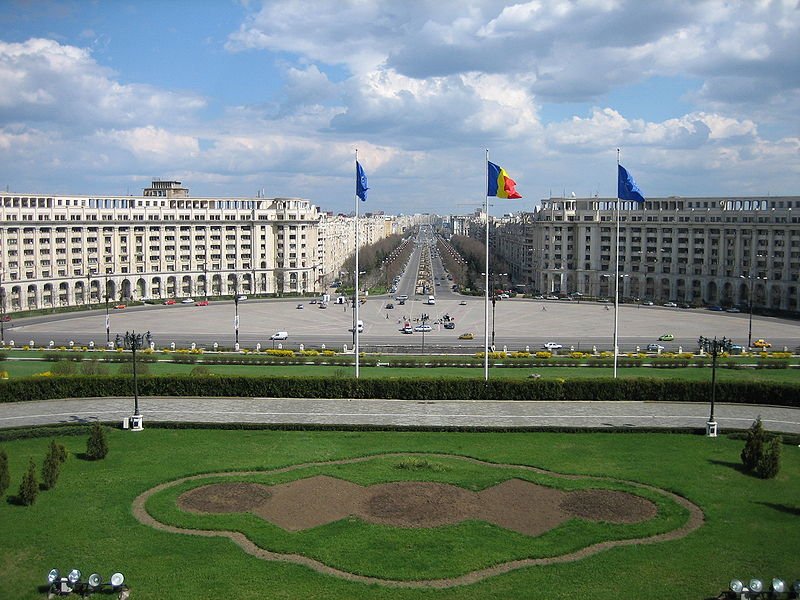 Palace of the Parliament, Bucharest
Palace of the Parliament, BucharestSource: https://commons.wikimedia.org/wiki/File:Palace_balcany_Unirii_view.jpg
Author: Simon Laird

Bucharest (Bucureşti) is the capital and biggest city in Romania. This city on the banks of the Dâmboviţa River covers 228 sq km (88 sq mi) and has a population of 1.9 million people within a metropolitan area of 2.15 million. It observes the East European Time, which is two hours ahead of Coordinated Universal Time (UTC+2) and three hours ahead during Daylight Saving Time in summer.
Bucharest is located in southeastern Romania at an elevation of between 55.8 m (183 ft) to 91.5 m (300 ft). The very heart of Bucharest is at University Square, and the city spreads out, almost in a circle. It has a ring road, the Şoseaua de Centura, that goes around the city. There are a number of lakes within the city, among them Lake Herăstrău, Lake Floreasca, Lake Tei and Lake Colentina, while right at the heart of the city is a man-made lake, Lake Cişmigiu.
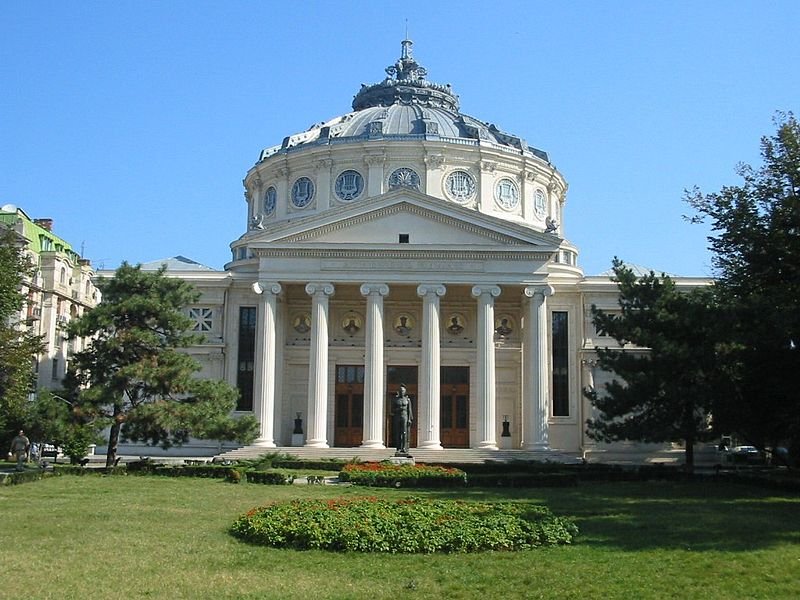 Roman Athenaeum concert hall, Bucharest
Roman Athenaeum concert hall, BucharestSource: https://commons.wikimedia.org/wiki/File:Ateneul_Roman_b.jpg
Author: Bogdangiusca

Bucharest experiences a humid continental climate. The warmest months are July and August, when the average high temperature regularly exceeds 28°C (83°F). Coldest month is January, when the average low temperature drops to -5.5°C (22.1°F). June is the wettest month in Bucharest, with 77 mm (3.03 in) of precipitation.
The history of Bucharest can be traced back to 1459, when the "citadel of Bucureşti" was first mentioned. From then till present day the city has gone through numerous periods of ups and downs, having been burned, ransacked by soldiers and destroyed by natural disasters. It was captured and ruled by the Ottomans since the 17th century, with brief periods being taken over by the Habsburg Monarchy. Bucharest fell under Russian control in 1828. In 1861, it became the capital of the Principality of Romania, and in 1881, the capital of the Kingdom of Romania.
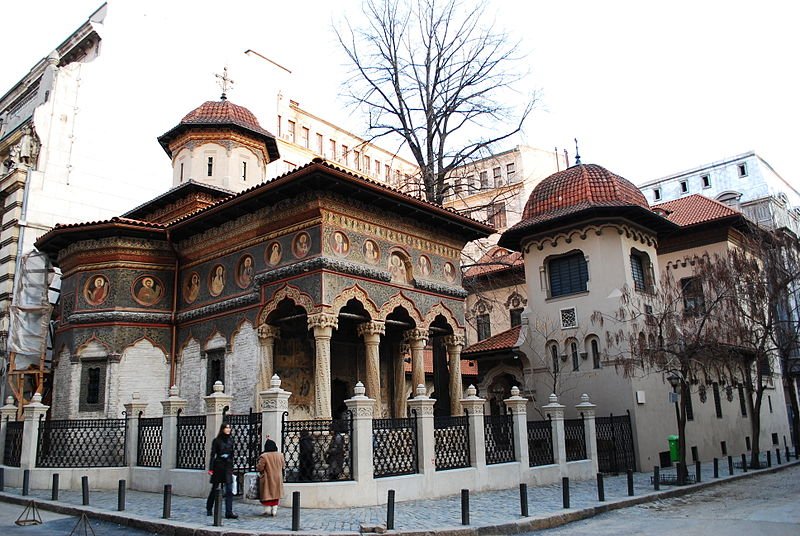 Stavropoleos Church, Bucharest
Stavropoleos Church, BucharestSource: https://commons.wikimedia.org/wiki/File:RO_B_Stavropoleos_Church_1.jpg
Author: Andrei Stroe

Bucharest experience rapid growth in the second half of the 19th century, leading to it being compared with Paris for its elegant architecture and high culture. For a period during World War I, the city was occupied by German forces. It was greatly devastated by Allied bombing during World War II.
The rise of Nicolae Ceauşescu to power brought a decidedly Communist appearance to the city, as many of its historic buildings were replaced by Stalinist architecture. After the Romanian Revolution of 1989 swept the Communist from power, Bucharest recovered from the upheaval, and began to register significant growth since the turn of the 21st century. This is reflected in the urban renewal the city is presently undergoing. Many of the buildings in its historic core are now under restoration.
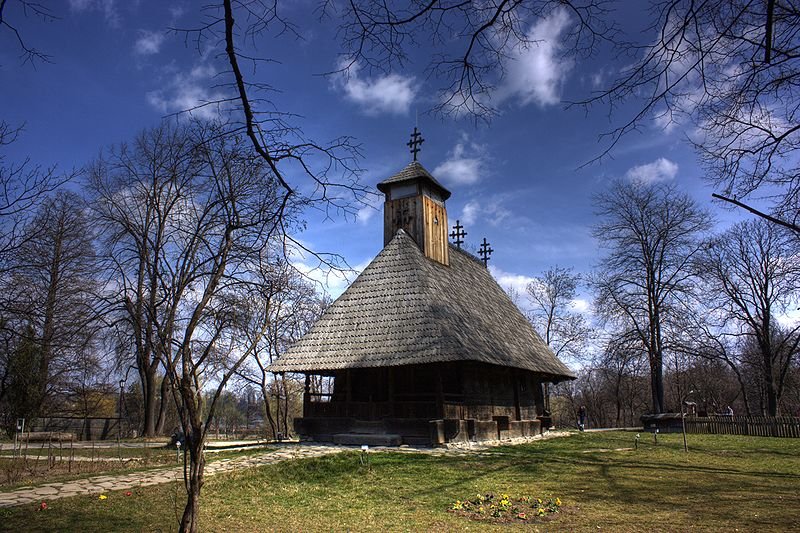 Timişeni village church at the National Village Museum, Bucharest
Timişeni village church at the National Village Museum, BucharestSource: https://commons.wikimedia.org/wiki/File:Biserica_Timi%C5%9Feni,_Bucharest.jpg
Author: Klearchos Kapoutsis

Visiting Bucharest, Romania
The Henri Coandă International Airport is the biggest and busiest airport in Romania. Located 18 km to the north of Bucharest, it is one of the two airports serving the city, the other being the Aurel Vlaicu Airport, which receives low cost carriers such as Wizz Air. If you arrive at Henri Coandă Airport, you can take the train, bus or taxis to reach downtown Bucharest. The train ticket is sold at a counter at the airport. It costs 6 lei. You are then tranfered to a shuttle bus, which takes you to the train station two km away. From the airport train station, you have another journey of half an hour or so to reach the main railway station, Gara de Nord, which has subway and bus connections to other parts of Bucharest.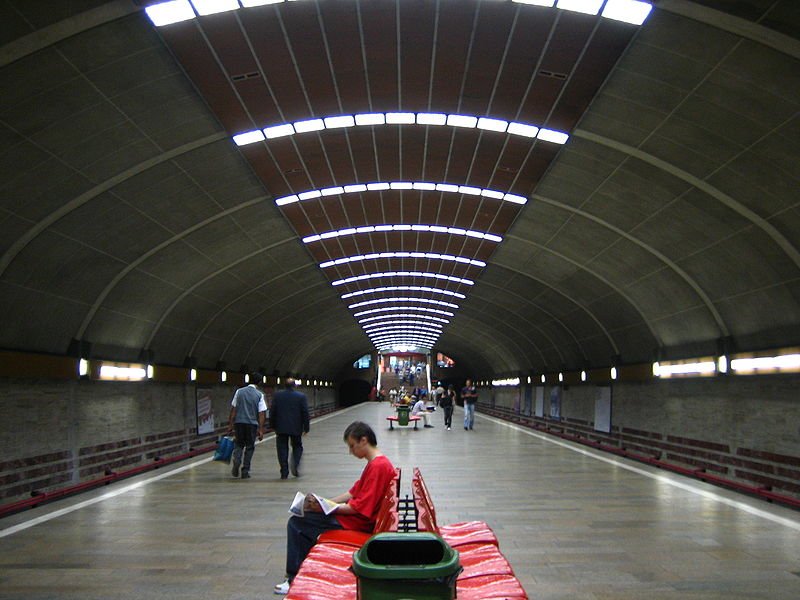 Titan Metro Station, Bucharest
Titan Metro Station, BucharestSource: https://commons.wikimedia.org/wiki/File:Titan_metro_station_1.jpg
Author: Simon Laird

Exploring Bucharest
The city has a subway network comprising 4 lines, namely M1, M2, M3 and M4. The easiest mode of paying your fare is to use the contact-less smart-cards called Activ, which can be reloaded with prepaid amount. It can be used in the subway as well as in the buses, trams and trolleybuses.Places of Interest in Bucharest, Romania
- Aviation Museum
- Bucharest History Museum
- Colţea Church
- Communist Party Headquarters
- Dimitrie Leonida Technology Museum
- Geology Museum
- George Enescu Memorial Museum
- Grigore Antipa Natural History Museum
- Herăstrău Park and Lake
- Jewish Community History Museum
- Kretzulescu Church
- Museum of Art Collection
- Museum of Old West Art
- Museum of the Romanian Peasant
- National History Museum
- Old Court Church
- Oţetari Church
- Palace of Parliament
- Patriarchal Cathedral
- Plumbuita Monastery
- Romanian Atheneum
- Royal Palace and National Art Museum
- Russian Church
- Sfântu Gheorghe Nou Church
- Stavropoleos Church
- Storck Museum
- Village Museum
 Latest updates on Penang Travel Tips
Latest updates on Penang Travel Tips

Copyright © 2003-2025 Timothy Tye. All Rights Reserved.

 Go Back
Go Back